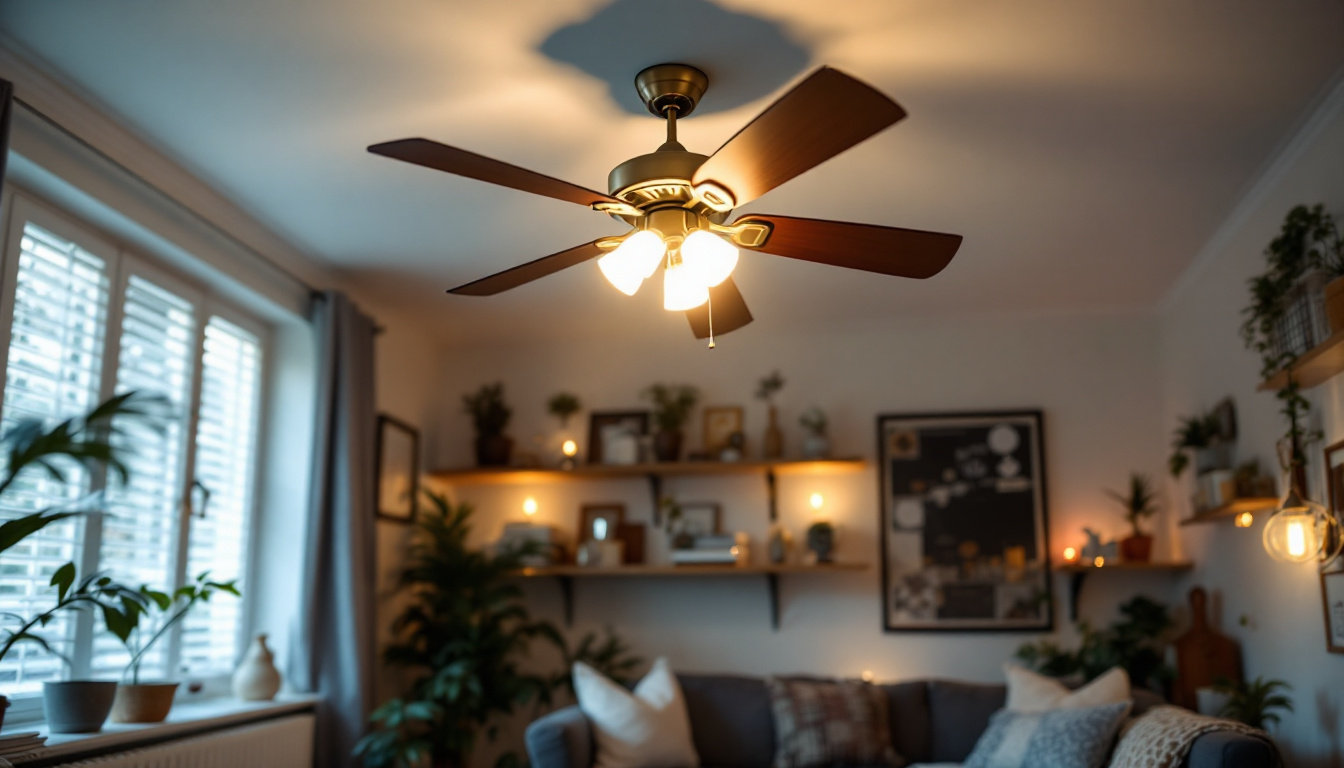
For lighting contractors, the installation of ceiling fans and lights is a common yet crucial task that demands attention to detail and adherence to safety standards. This checklist serves as a comprehensive guide to ensure that every aspect of the installation process is covered, from planning to execution. By following this checklist, contractors can enhance their efficiency, reduce the likelihood of errors, and ultimately deliver a superior service to their clients.
Before embarking on any installation project, it is essential to have a clear understanding of the client’s requirements. This involves discussing their preferences, the intended use of the space, and any specific features they desire in their ceiling fans and lighting fixtures. By gathering this information upfront, contractors can ensure that the final installation not only meets but exceeds the client’s expectations, creating a harmonious blend of functionality and aesthetic appeal.
The initial consultation is a critical step in the process. During this meeting, contractors should take the time to listen to the client’s vision and expectations. Questions should be asked about the style of the ceiling fan and lights, the desired ambiance, and any specific functionalities, such as remote controls or energy efficiency. Additionally, discussing the client’s budget and timeline can help set realistic goals for the project. This collaborative dialogue fosters a sense of partnership and trust, which is essential for a successful outcome.
Conducting a thorough site assessment is equally important. This involves evaluating the space where the ceiling fan and lights will be installed. Factors such as ceiling height, existing electrical wiring, and the overall layout of the room can significantly influence the choice of fixtures and the installation process. It’s also beneficial to consider the room’s color scheme and decor style, as these elements will guide the selection of materials and finishes. Taking precise measurements and noting any architectural features, such as beams or crown molding, can help in recommending the most suitable fixtures that complement the existing design.
Furthermore, understanding the client’s lifestyle can provide valuable insights into their lighting needs. For instance, a family with young children may prioritize safety features and durability, while a homeowner who frequently entertains guests might seek adjustable lighting options to create different moods. By delving deeper into these lifestyle considerations, contractors can propose solutions that not only enhance the aesthetic appeal of the space but also improve its functionality, ensuring that the installation serves the client’s needs for years to come.
Selecting the appropriate ceiling fan for a space is crucial for both aesthetics and functionality. The right fan can enhance the overall look of a room while providing comfort and energy efficiency.
The size of the ceiling fan should be proportionate to the room. A fan that is too small may not provide adequate airflow, while one that is too large can overwhelm the space. Additionally, the style of the fan should complement the room’s decor. Whether the client prefers a modern, traditional, or rustic design, there are numerous options available to suit every taste. For instance, a sleek, minimalist fan can seamlessly blend into a contemporary setting, while a vintage-inspired fan can add character to a classic room. Furthermore, the finish of the fan blades and the light fixtures can also play a significant role in tying the overall aesthetic together, so it’s essential to consider materials like wood, metal, or even glass accents that can enhance the visual appeal.
With an increasing focus on sustainability, energy-efficient ceiling fans are becoming more popular. Contractors should inform clients about the benefits of energy-efficient models, which can help reduce electricity bills and minimize environmental impact. Look for fans with the ENERGY STAR label, as these meet strict energy efficiency guidelines. Additionally, many modern ceiling fans come equipped with advanced features such as smart technology, allowing users to control their fan settings via smartphone apps or voice commands. This not only adds convenience but also enables homeowners to optimize their energy use by scheduling fan operation according to their daily routines. Moreover, some models offer reversible motors, providing the flexibility to switch airflow direction seasonally, which can further enhance energy savings throughout the year.
Lighting plays a pivotal role in setting the mood and functionality of a space. Selecting the right lighting fixtures involves understanding the different types available and their respective applications.
There are three primary types of lighting: ambient, task, and accent. Ambient lighting provides overall illumination, task lighting is focused on specific areas for activities such as reading or cooking, and accent lighting highlights architectural features or artwork. Contractors should discuss with clients which types of lighting will best serve their needs.
Just like ceiling fans, lighting fixtures come in various styles, including chandeliers, pendant lights, wall sconces, and recessed lighting. The choice of bulb type—LED, incandescent, or fluorescent—also impacts energy consumption and the quality of light. Educating clients on these options can help them make informed decisions that align with their preferences and budget.
Once the choices have been made, the installation process can begin. It is vital to follow a systematic approach to ensure safety and efficiency throughout the project.
Before starting the installation, contractors should gather all necessary tools and materials. This includes screwdrivers, pliers, wire strippers, electrical tape, and the ceiling fan and lighting fixtures themselves. Having everything on hand minimizes delays and keeps the workflow smooth.
Safety should always be the top priority during installation. Contractors must ensure that the power is turned off at the circuit breaker before beginning any electrical work. Additionally, using proper personal protective equipment (PPE) such as gloves and safety goggles is essential to prevent accidents.
The installation of a ceiling fan involves several key steps that must be followed meticulously to ensure optimal performance and safety.
The first step in installing a ceiling fan is to mount the fan bracket securely to the ceiling. This bracket must be able to support the weight of the fan and withstand the forces generated by its operation. Once the bracket is in place, the fan motor can be attached.
Next, the wiring connections must be made. This involves connecting the fan’s wires to the existing electrical wiring in the ceiling. It is crucial to follow the manufacturer’s instructions and ensure that all connections are secure and properly insulated to prevent electrical hazards.
Installing lighting fixtures requires a similar approach, with attention to detail and safety being paramount.
Before installing a lighting fixture, the electrical box must be prepared. This involves ensuring that it is securely mounted and capable of supporting the weight of the fixture. If the existing box is not suitable, it may need to be replaced with a more robust option.
Once the electrical box is ready, the lighting fixture can be attached. This typically involves connecting the fixture’s wires to the house wiring and securing the fixture to the electrical box. As with ceiling fans, it is essential to follow the manufacturer’s instructions carefully.
After installation, testing the ceiling fan and lighting fixtures is a critical step that should not be overlooked. This ensures that everything is functioning correctly and safely.
Once all connections are made, the power can be turned back on at the circuit breaker. Contractors should test the ceiling fan’s operation, checking for proper airflow and noise levels. Similarly, all lighting fixtures should be tested to ensure they illuminate as expected and that there are no flickering issues.
If any issues are detected during testing, adjustments should be made immediately. This may involve tightening connections, adjusting the fan’s speed settings, or replacing faulty bulbs. Ensuring that everything operates smoothly before leaving the job site is essential for client satisfaction.
Once the installation and testing are complete, a final walkthrough with the client is an excellent opportunity to showcase the work done and address any questions they may have.
During the walkthrough, contractors should take the time to demonstrate the features of the ceiling fan and lighting fixtures. This includes showing how to use remote controls, adjust light settings, and change fan speeds. Educating the client on how to operate their new installations enhances their overall experience and satisfaction.
In addition to demonstrating features, providing maintenance tips is crucial. Contractors should inform clients about the importance of regular cleaning and maintenance to ensure longevity and optimal performance. This could include recommendations for dusting the fan blades, changing light bulbs, and checking for loose connections periodically.
In summary, the installation of ceiling fans and lights is a multifaceted process that requires careful planning, execution, and follow-up. By adhering to this checklist, lighting contractors can ensure that they meet their clients’ needs while maintaining high safety standards and delivering quality workmanship. A thorough understanding of the client’s preferences, combined with a systematic approach to installation and testing, will ultimately lead to successful projects and satisfied customers.
By following these guidelines, lighting contractors can enhance their reputation and build lasting relationships with clients, paving the way for future projects and referrals. The attention to detail and commitment to excellence showcased in each installation will undoubtedly set contractors apart in a competitive industry.
Ready to elevate your lighting installations with products that blend quality, affordability, and convenience? Look no further than LumenWholesale for all your ceiling fan and lighting needs. As a dedicated partner to lighting contractors, we offer an extensive selection of spec-grade lighting products at unbeatable wholesale prices. Say goodbye to local distributor markups and hello to superior lighting solutions that meet the highest industry standards. Plus, with free shipping on bulk orders, you can stock up on premium lighting without any hidden fees. Don’t compromise on quality or value—choose LumenWholesale for Wholesale Lighting at the Best Value and make your next project a shining success.

Discover why the MR16 bulb is a game-changer for lighting contractors.

Discover essential insights into Rab Landscape Lighting with our comprehensive guide tailored for lighting contractors.

Discover how T5 LED lights are revolutionizing the lighting industry, offering contractors unparalleled efficiency and versatility.

Discover the essential guide for lighting contractors on selecting the best light for studying.